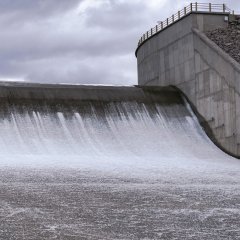World Ocean Radio - Ocean Engineering

This week on World Ocean Radio we're discussing a news story provided by Inside Climate News that highlights Corpus Christi, Texas and the intensively water-dependent industrial projects there that, by special commitments and permits, are consuming the necessary water supply at a rate of 30 million gallons per day, drawn from an already-stressed groundwater supply, now further exacerbated by droughts and population consumption.
This week marks the 750th episode of World Ocean Radio: 15 years of weekly short audio that reaches millions around the globe, sharing concepts, demands, and solutions related to ocean technology and science, policy, examples of best practice, personal reflections, and solutions for how the ocean connects, sustains, inspires, and engages us in common history, traditions, sustenance, communication, community, and well-being. Thank you for listening!
This week on World Ocean Radio we discuss the disruption and potential sabotage of the Nord Stream Line, the underwater natural gas pipelines in the Baltic Sea and North Atlantic that connect Poland to Norway, causing enormous leaks of methane within the ocean and atmosphere. Who did this and why? And what does it mean for future disruptions of its kind that could affect all of us here on Earth?
This week on World Ocean Radio we're talking about the circulation of water worldwide, and the importance of canals and waterways to bring us together and sustain us into the future.
This week on World Ocean Radio host Peter Neill gets us thinking about seawater: as a resource for fresh drinking water, as a means for robust renewable energy, and perhaps so much more; and he discusses the potential for inventive ideas using ocean systems that have yet to be imagined or explored.
Bridges are physical structures born from the ingenuity and hard work of humankind, engineered to connect things from one side to another. Bridges are also symbols and metaphors. This week on World Ocean Radio host Peter Neill muses about the bridge between despair and hope, between resistance and reinvention, between past and future. In this episode he encourages us to have the courage and determination to cross over to the other side where a sustainable future awaits.
What is the framework by which to outline our values, structures, and behaviors regarding the ocean, fresh water, and all the benefits of nature required for human survival? In this episode of World Ocean Radio, host Peter Neill examines this question and provides us with an overview of the Design Lens of Biomimicry 3.8, an organization dedicated to learning from the natural world in order to respond to our present day situation. He'll share the nine principles of the biomimicry architecture and argue that they provide a new vocabulary for us to understand the virtues of Nature if we are able to adopt them for a sustainable future.
The Chicago Ship Canal is a major feat of civil engineering, and has been controversial and problematic since the beginning. Pollution from an ever-growing human population, the added demand for increased ship and barge traffic, and the introduction of Asian carp into the waterway in the 1970s have posed increased challenges and new threats both upstream and downstream. In this episode of World Ocean Radio host Peter Neill outlines the present situation and the expensive, multi-year plan to restore a natural barrier that was destroyed more than 100 years ago.
A San Diego County Water Authority project to construct a 6-acre desalination plant, the largest of its kind in the United States, comes at a time when the traditional water supply system in California is overwhelmed by changing climate, high agricultural demand, and high consumption by an increased population. In this episode of World Ocean Radio, host Peter Neill will describe the process of desalination, break down the numbers, and describe the objections to and development of this increasingly necessary technology which has the potential to produce billions of gallons of potable water per day.
The Rasuwaghadi Dam project in Nepal, severely damaged by the recent earthquake, is mired in controversy. One of many mega-projects along the Tishuli River, it is simultaneously over-engineered due to future inadequate supply of water from decreased glacial melt, and under-engineered due to risk factors such as earthquakes. In this episode of World Ocean Radio host Peter Neill will cite from a recent report from New Yorker Magazine author Isabel Hunter who revealed sobering facts about the Rasuwaghadi Dam and its ilk: projects fueled by central governments, unlimited finance, cheap labor, environmental disregard, social dislocation, and cultural destruction.

